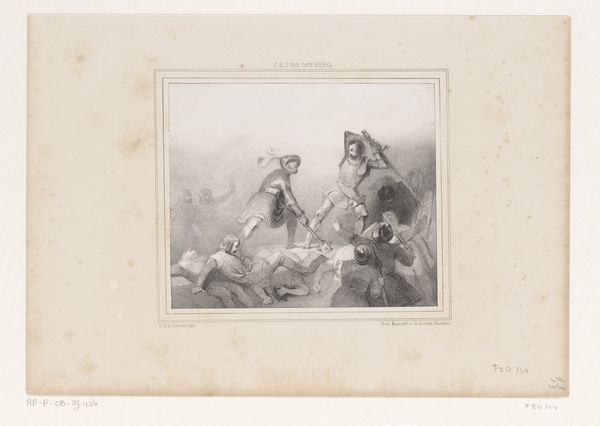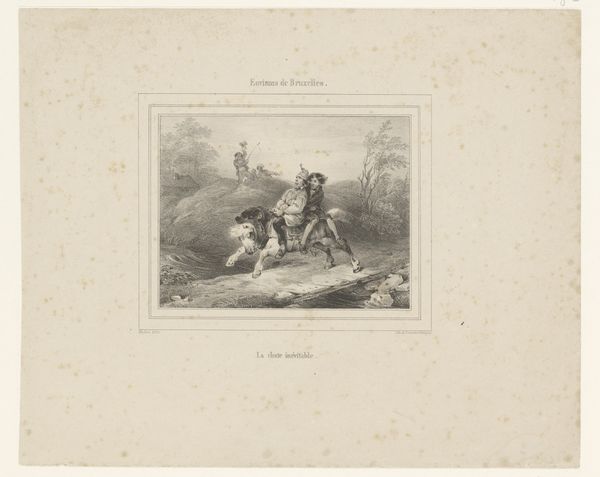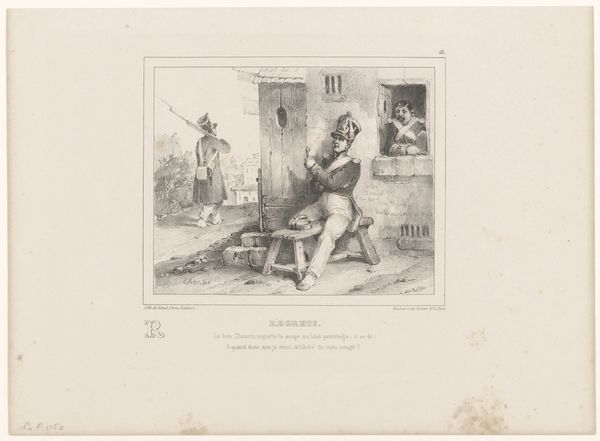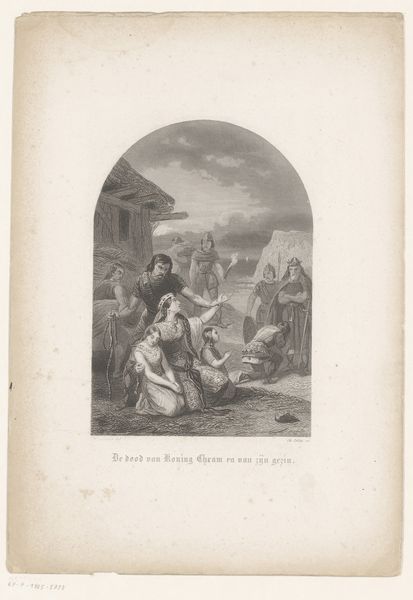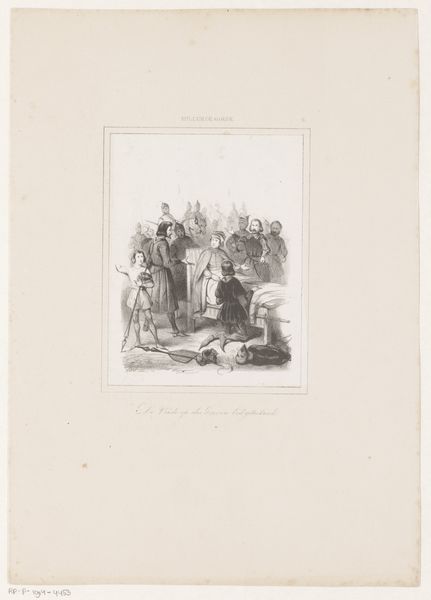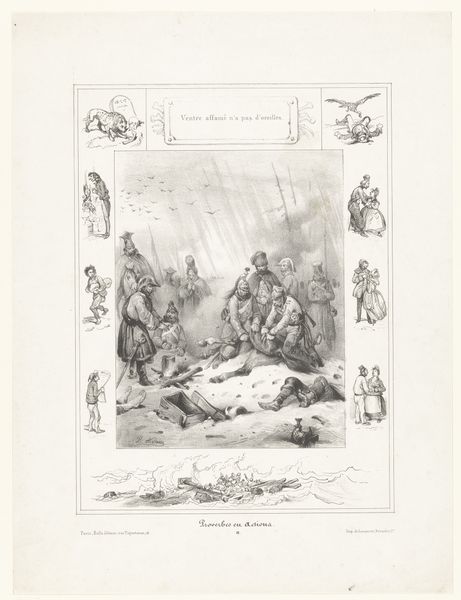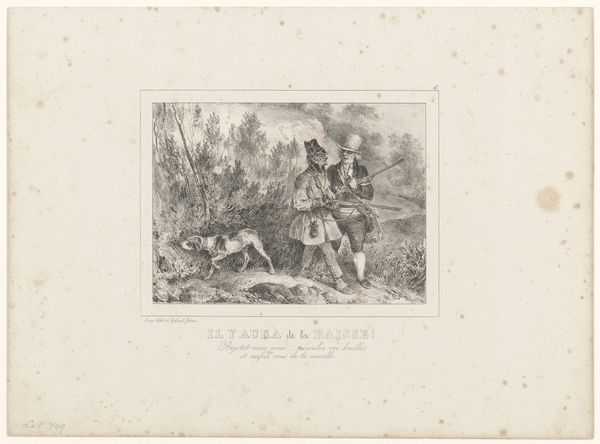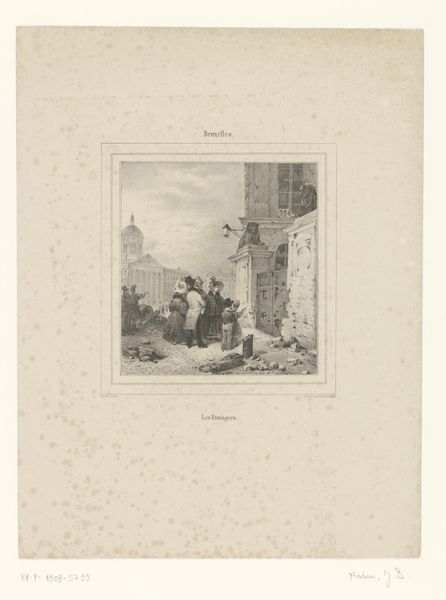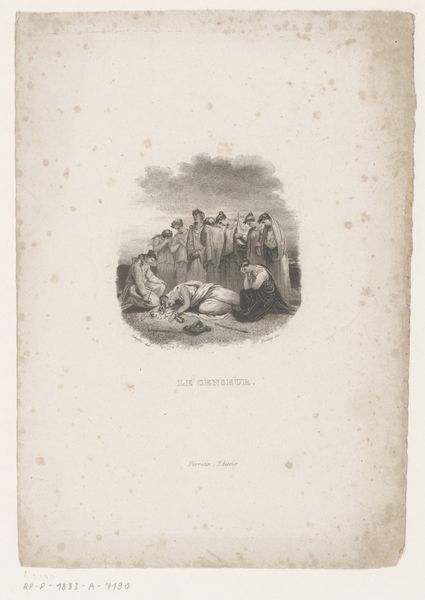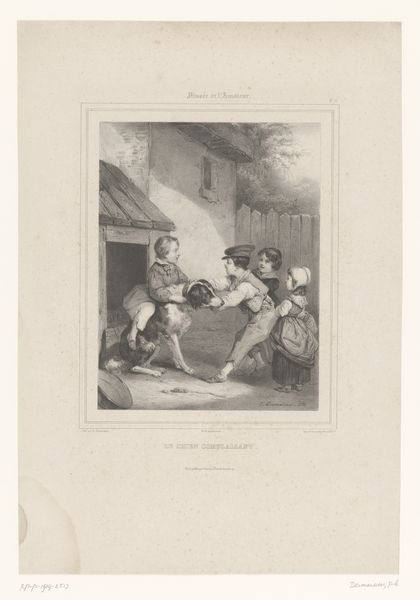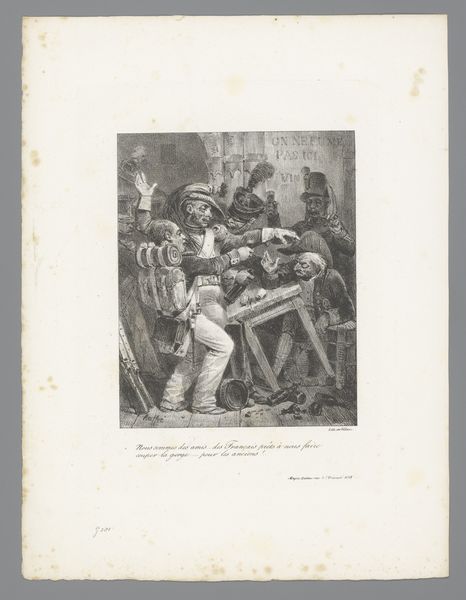
print, etching, engraving
# print
#
etching
#
old engraving style
#
landscape
#
figuration
#
romanticism
#
line
#
history-painting
#
engraving
#
realism
Dimensions: height 443 mm, width 306 mm
Copyright: Rijks Museum: Open Domain
Curator: This is "Zaragoza belegerd," a print by François Grenier, dating back to approximately 1838. It's currently held at the Rijksmuseum. Editor: It's intense. The stark lines of the etching capture a scene of what appears to be utter chaos, a moment frozen in the midst of turmoil. The tonal gradations are also so well handled, I imagine a chiaroscuro painting made concrete. Curator: Indeed. It depicts the siege of Zaragoza, a brutal episode in the Peninsular War, or as it's known in Spain, the War of Independence, against Napoleon's forces. You see here a story of resistance. Editor: And is that resistance gendered? I notice the woman at the centre seems almost a figure of piety or mourning, carrying a bouquet through the carnage? Curator: Exactly! She is likely a representation of Agustina de Aragón, or some other patriotic woman. This piece underscores the role of women who defended the city and, by extension, the soul of the nation. This work definitely participates in the grand Romantic tradition of nationalist art! Editor: From a purely visual perspective, Grenier’s choices intrigue me. He frames this with such deliberate, sharp linearity, almost like a stage set, underscoring the performative nature of such heroic depictions. He draws the eye with this figure, almost saintly despite the context of rubble and strife. Curator: Agreed. There is an attempt to render the conflict heroic. I wonder to what degree we ought to view it uncritically through a nationalistic lens given what that nation came to perpetuate through colonisation. Editor: An important provocation that gives one a more considered experience of its impact. I like how you prompt questions about its historical positioning to avoid aestheticising violence. Curator: I find that seeing art requires a sensitivity to social conditions and implications of power and identity... Editor: While my response is anchored in aesthetic considerations, reflecting on the role line work and composition contribute in capturing moments of trauma... together our views enhance an image, or even better an awareness of history and its relationship to power.
Comments
No comments
Be the first to comment and join the conversation on the ultimate creative platform.
